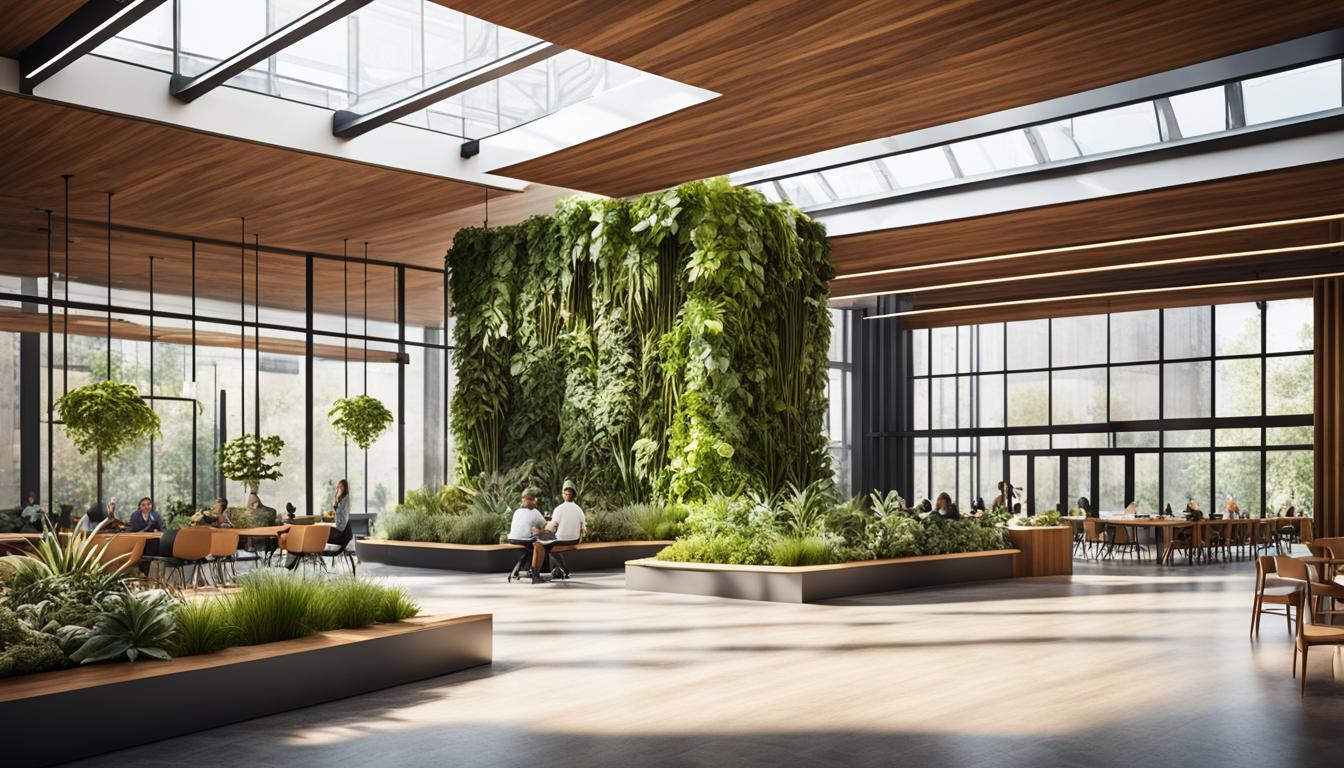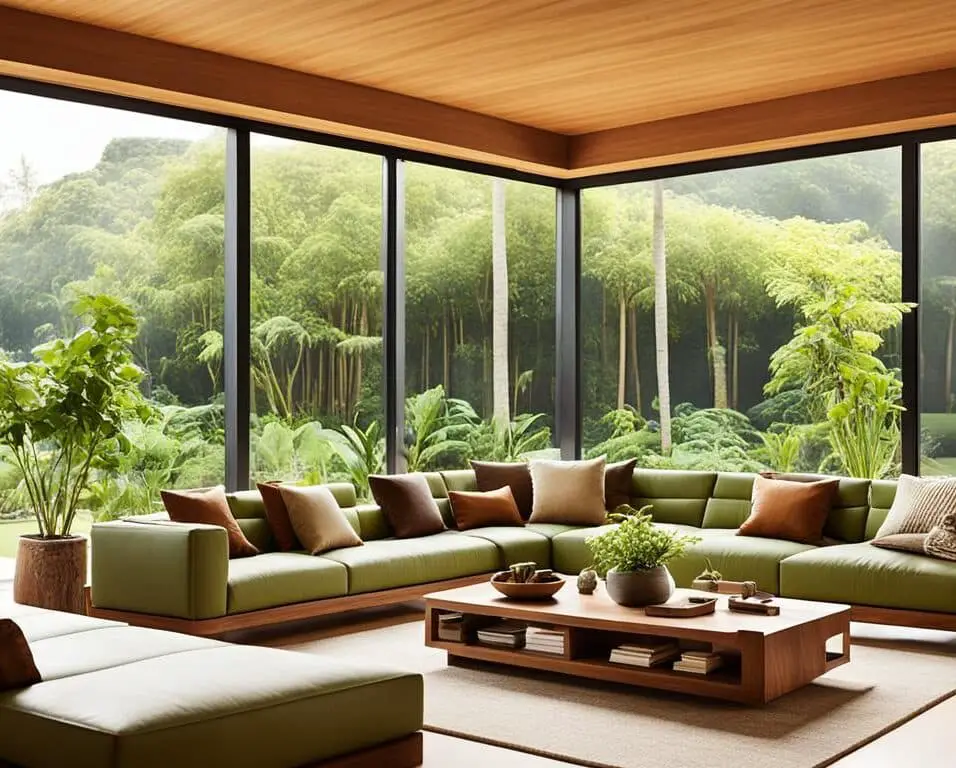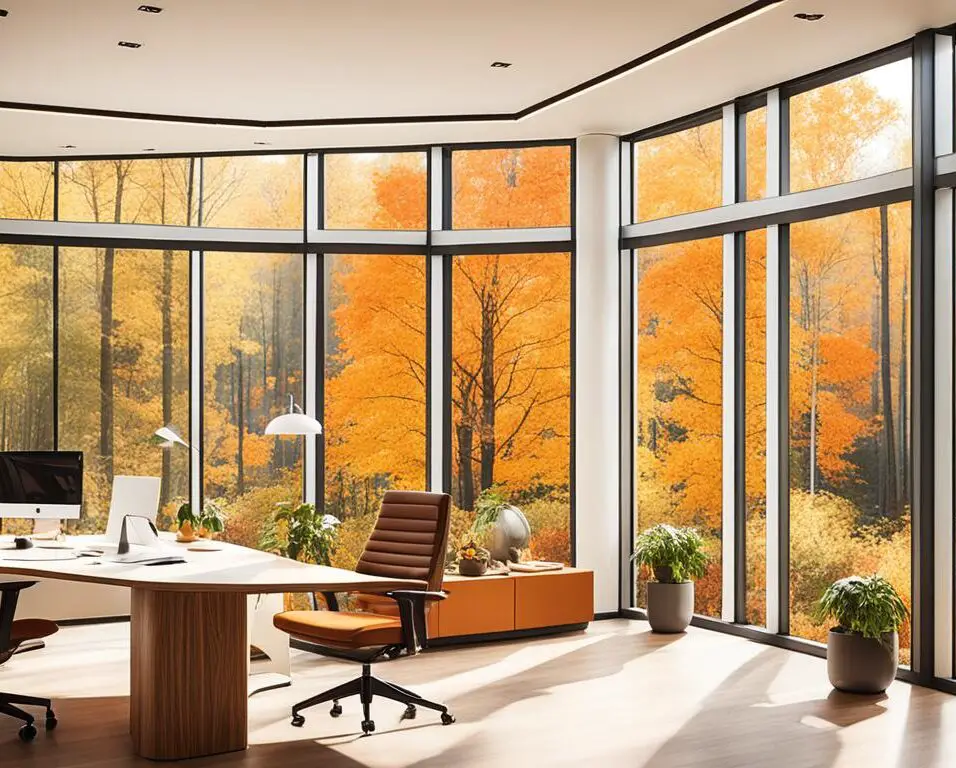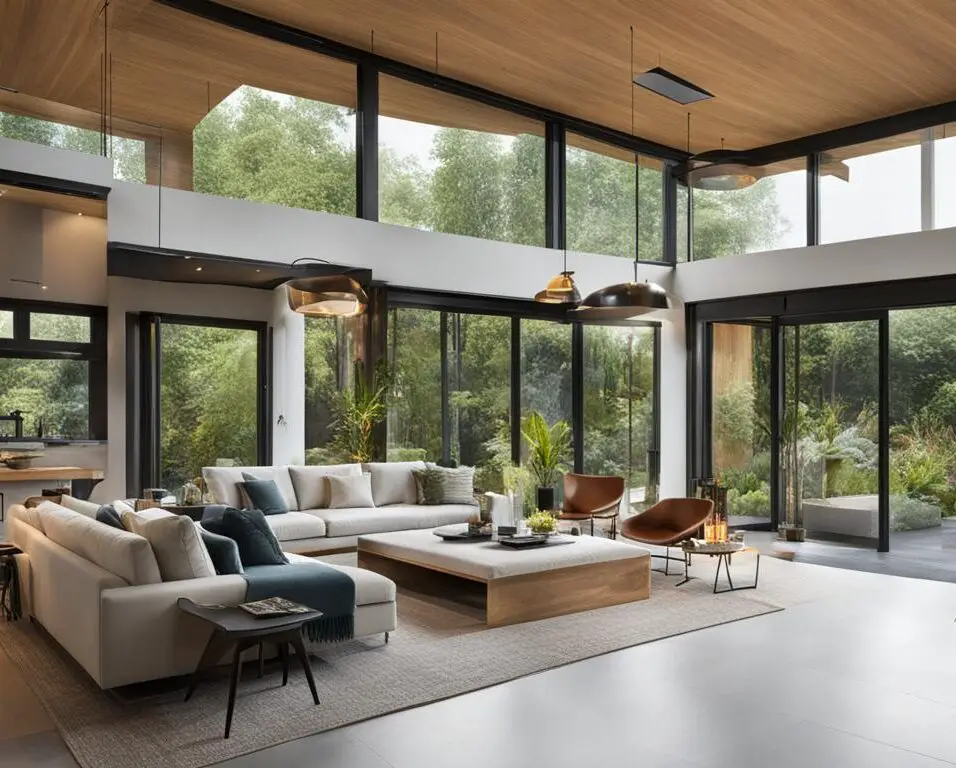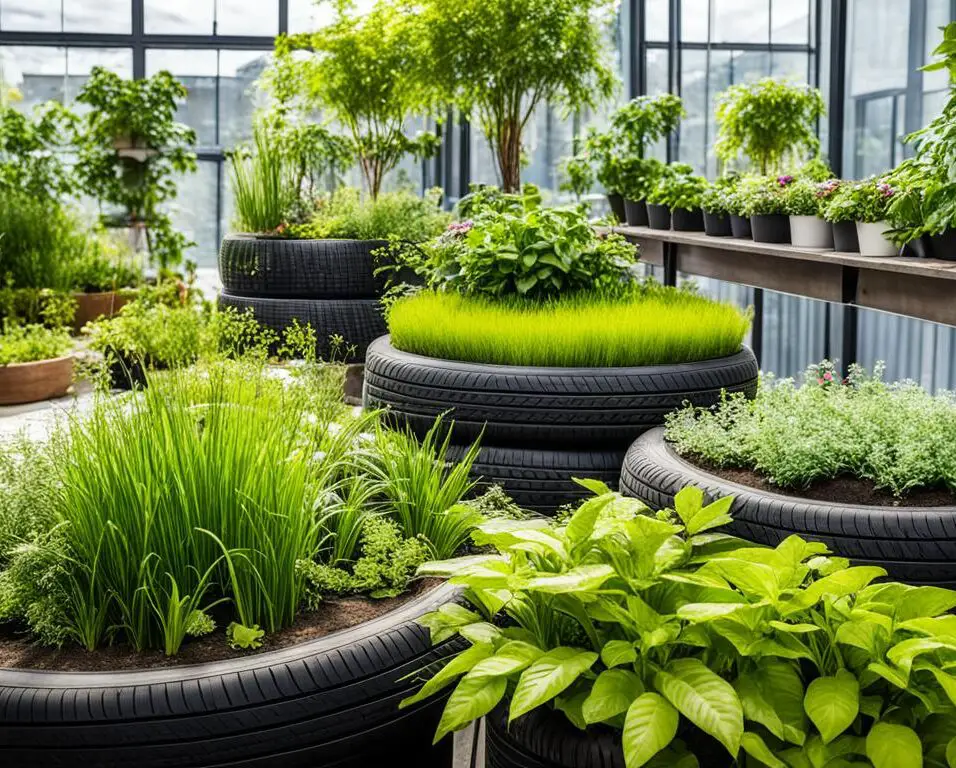Architecture for the Mind: Biophilic Design for Improved Mental Health
Biophilic architecture, a concept that integrates elements of nature into the design of living spaces, is revolutionizing the field of architecture. As a journalist who has closely followed the recent developments in this area, I am excited to explore the significant impact of biophilic design on mental health and well-being.
Biophilic architecture recognizes the profound connection between humans and nature and seeks to create environments that promote peace, serenity, and rejuvenation. By incorporating natural elements such as plants, natural light, and water features, biophilic design fosters a sense of harmony and tranquility that positively influences the mind.
Research and studies have consistently shown the numerous benefits of biophilic design on mental health. The presence of nature-inspired elements in living spaces can reduce stress levels, increase productivity, and enhance cognitive function. Whether it’s a residential home, a commercial building, or a healthcare facility, biophilic architecture has the potential to transform the way we experience and interact with our built environment.
Key Takeaways:
- Biophilic architecture incorporates elements of nature into the design of living spaces.
- Research shows that biophilic design promotes improved mental health and well-being.
- Nature-inspired elements can reduce stress, increase productivity, and enhance cognitive function.
- Biophilic architecture is gaining popularity in various fields, from residential homes to healthcare facilities.
- Implementing biophilic design principles involves integrating natural elements and sustainable materials.
The Benefits of Biophilic Architecture
Biophilic architecture offers numerous benefits for mental health and overall well-being. By incorporating natural elements such as plants, natural light, and water features, it creates a connection to nature that has a calming and soothing effect on occupants.
Exposure to nature has been proven to reduce stress, lower blood pressure, and boost mood. In fact, a study conducted by Harvard University found that patients in hospital rooms with nature views had shorter recovery times and required less pain medication compared to those with windowless rooms[1].
Biophilic design also enhances indoor air quality, promoting a healthier environment. Plants act as natural air purifiers by filtering toxins and releasing oxygen, leading to improved respiratory function and overall well-being[2].
In addition to physical benefits, nature-inspired spaces can have significant positive effects on mental health. According to a research study published in the Journal of Environmental Psychology, access to nature and green spaces can reduce depression, anxiety, and fatigue, while increasing cognitive function and creativity[3].
By integrating biophilic design principles into the built environment, architects and designers create spaces that support the mental and emotional well-being of occupants. These nature-inspired spaces provide a sense of tranquility, fostering relaxation and mental rejuvenation. They also stimulate creativity and productivity, enabling individuals to thrive in their professional and personal lives.
Biophilic architecture: a mindful design approach that harnesses the power of nature to enhance our well-being and quality of life.
Biophilic architecture not only benefits individuals but also has a positive impact on communities and the environment as a whole. By incorporating sustainable materials and nature-inspired elements, such as green roofs and rain gardens, biophilic design contributes to biodiversity, reduces the urban heat island effect, and improves overall ecological resilience. It is a holistic approach that aligns human needs with the well-being of the planet.
Key Mental Health Benefits of Biophilic Architecture:
- Reduced stress levels
- Lowered blood pressure
- Elevated mood and well-being
- Improved cognitive function and creativity
- Enhanced indoor air quality
- Promotion of physical activity and well-being
In summary, biophilic architecture offers a wide range of mental health benefits and creates nature-inspired spaces that promote well-being. By integrating natural elements into the built environment, architects and designers have the opportunity to improve the quality of life for individuals and contribute to a more sustainable and healthy future.
Sources:
- Aspinall, P., et al. (2014). The Impact of Perceived Naturalness on Affective Responses and Cognitive Performance in Built Settings. Ambient Intelligence: Second International Joint Conference. Retrieved from https://www.ncbi.nlm.nih.gov/pmc/articles/PMC4588114/
- Sthapit, E., et al. (2017). Biophilic Design in the Architecture of Healthcare Facilities: A Review of the Literature. Healthcare. Retrieved from https://www.ncbi.nlm.nih.gov/pmc/articles/PMC5663011/
- Hansmann, R., et al. (2007). Green Spaces and Cognitive Development in Primary Schoolchildren. Proceedings of the National Academy of Sciences. Retrieved from https://www.pnas.org/content/101/20/7999
Implementing Biophilic Architecture
Implementing biophilic architecture involves incorporating various design principles and nature-inspired elements into the construction and layout of a building. By seamlessly blending the built environment with nature, biophilic design creates harmonious spaces that promote well-being and sustainability.
Biophilic design principles encompass a range of strategies that integrate nature into the architectural design. These principles include:
- Providing direct access to nature through windows and outdoor spaces
- Integrating natural light through skylights and large windows
- Using sustainable materials and finishes
- Creating visual connections to nature with the use of colors and textures
When implementing biophilic architecture, architects and designers can incorporate a variety of nature-inspired elements into the building. These elements enhance the connection to nature and further enhance the benefits of the design. Some examples of nature-inspired elements include:
- Green walls: These vertical gardens bring lush greenery into interior spaces, improving air quality and providing a sense of tranquility.
- Indoor gardens: Integrating small gardens within buildings creates a serene and calming environment, evoking a closer connection to nature.
- Water features: Incorporating elements like fountains, ponds, or water walls adds a soothing and refreshing touch to the space.
- Natural materials: The use of sustainable and organic materials like wood, stone, and bamboo enhances the tactile experience and reinforces the connection to nature.
Biophilic architecture can be applied to both new construction projects and existing buildings through renovations and retrofits. By revamping the existing structures or incorporating biophilic design principles from the start, architects can create spaces that are not only aesthetically pleasing but also contribute to the well-being of their occupants.

Case Study: Incorporating Sustainable Materials
One example of implementing biophilic design principles is the Bullitt Center in Seattle, Washington. Designed to be the greenest commercial building in the world, it showcases the use of sustainable materials throughout its construction. The building features FSC-certified wood, salvaged materials, and low-VOC finishes, minimizing its environmental impact while promoting a healthy indoor environment.
| Biophilic Design Principle | Nature-Inspired Element | Example |
|---|---|---|
| Direct access to nature | Windows | Large windows overlooking a green courtyard |
| Outdoor spaces | Accessible rooftop garden | |
| Natural light integration | Skylights | Skylights in the atrium |
| Large windows | Floor-to-ceiling windows in the lobby | |
| Sustainable materials and finishes | Salvaged wood | Wood reclaimed from demolished buildings |
| Visual connections to nature | Colors | Natural color palette inspired by the surrounding landscape |
| Textures | Exposed concrete walls with a textured pattern resembling tree bark |
Incorporating biophilic design principles and nature-inspired elements into architectural projects fosters a deeper connection with nature, creating spaces that promote well-being, sustainability, and a sense of harmony with the natural world.
Case Studies: Biophilic Architecture in Action
Real-life examples of biophilic architecture demonstrate the successful implementation of this design approach in various projects. These case studies showcase the incorporation of nature-inspired elements and highlight the positive impact of biophilic design on occupant well-being and environmental sustainability.
Amazon Spheres, Seattle, Washington
The Amazon Spheres in Seattle, Washington, serve as an excellent example of biophilic design. This unique workplace environment features a three-story greenhouse filled with over 40,000 plants. The lush greenery creates a serene and vibrant atmosphere, promoting creativity, productivity, and a sense of well-being among employees. The natural elements incorporated into the design offer a direct connection to nature, improving mental health and reducing stress levels.
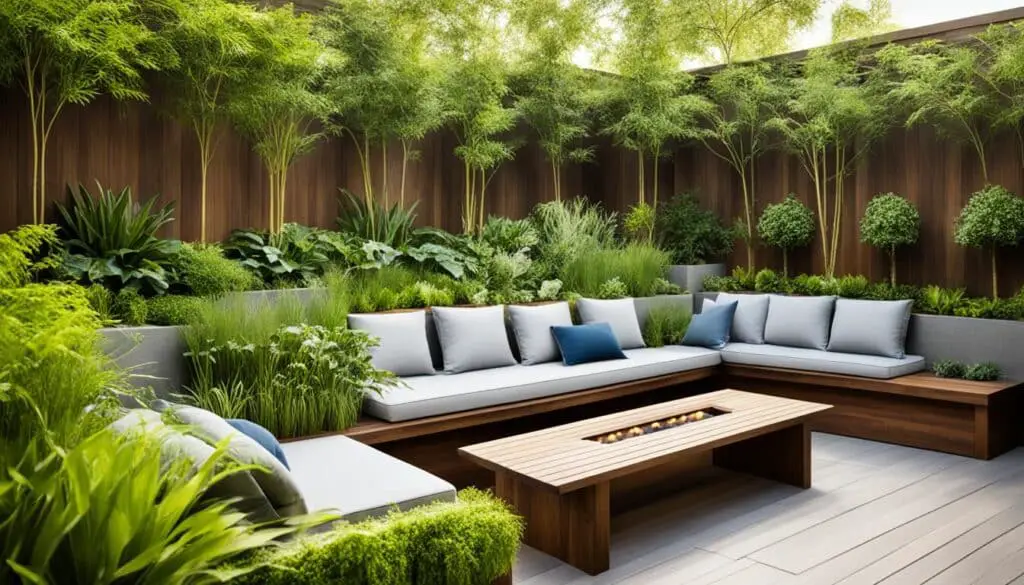
Parkroyal on Pickering, Singapore
The Parkroyal on Pickering hotel in Singapore showcases an exceptional integration of greenery into urban architecture. The building boasts extensive gardens and cascading vertical greenery systems, providing a peaceful sanctuary amidst the bustling cityscape. This biophilic design promotes a sense of tranquility and harmony, allowing guests to relax and rejuvenate in a nature-inspired setting. The hotel’s commitment to sustainable practices further reinforces the environmental benefits of biophilic architecture.
School of the Arts, Singapore
The School of the Arts in Singapore demonstrates the implementation of biophilic design principles in an educational setting. The building incorporates natural ventilation and daylighting strategies, maximizing the use of natural light and fresh air. These elements create an optimal learning environment for students, enhancing their cognitive function and overall well-being. By integrating nature into the design, the School of the Arts fosters creativity and inspiration among its students, supporting their artistic development.
These case studies illustrate the versatility and effectiveness of biophilic architecture in creating inspiring, sustainable, and health-enhancing spaces. The successful integration of natural elements not only improves mental health and well-being but also contributes to the overall quality of life for occupants.
Conclusion
Biophilic architecture, with its emphasis on incorporating nature into design, has shown immense potential in enhancing mental health and overall well-being. As research continues to emphasize the importance of our connection to the natural world, the integration of biophilic design principles in architecture is set to become more prevalent. The positive impacts on mental health, productivity, and quality of life make biophilic architecture a compelling approach to design.
With the increasing demand for sustainable and wellness-oriented design, biophilic architecture is poised to shape the future of the industry. By creating spaces that support and nurture the human mind, it offers a powerful tool to architects, designers, and developers seeking to enhance the well-being of occupants.
The potential for biophilic architecture extends beyond residential homes and commercial buildings. It can also be effectively implemented in healthcare facilities, schools, and urban planning, ultimately transforming our built environment into spaces that prioritize mental health and well-being.
FAQ
What is biophilic architecture?
Biophilic architecture incorporates elements of nature into the design of living spaces, promoting improved mental health and well-being.
What are the benefits of biophilic architecture?
Biophilic architecture offers numerous benefits for mental health and overall well-being, including reduced stress levels, increased productivity, and enhanced cognitive function.
How is biophilic architecture implemented?
Implementing biophilic architecture involves incorporating various design principles and nature-inspired elements into the construction and layout of a building, such as providing direct access to nature, integrating natural light, using sustainable materials, and creating visual connections to nature.
Can biophilic architecture be applied to existing buildings?
Yes, biophilic architecture can be applied to both new construction projects and existing buildings through renovations and retrofits.
Can you provide examples of biophilic architecture projects?
Real-life examples of biophilic architecture include the Amazon Spheres in Seattle, the Parkroyal on Pickering hotel in Singapore, and the School of the Arts in Singapore, each incorporating different nature-inspired elements to create inspiring and sustainable spaces.
What is the future of biophilic architecture?
As research continues to highlight the importance of our connection to nature, biophilic architecture will likely continue to grow in popularity and serve as a powerful tool for creating spaces that support and nurture the human mind.
Source Links
- https://nautil.us/who-controls-your-thoughts-498055/
- https://www.theglobeandmail.com/life/home-and-design/article-canadas-leading-interior-designers-and-architects-imagine-the-cities/
- https://www.architectureanddesign.com.au/suppliers/fairview-architectural/biophilic-facade-design-with-natural-cladding



